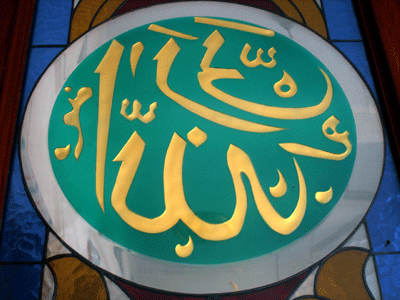Introduction
Every religion defines itself, has its own worldview and its own value systems. Likewise, it has its own theology(s), scriptures and sacred texts, doctrines and dogmas, rites and rituals, and customs and practices. True there are many exciting similarities and common items, but at the fundamental levels, i.e., the faith items, they are different. Although we celebrate and rejoice in our similarities and shared values, we should not forget and overlook the differences because it is over the differences that misunderstandings develop, and if escalated, the unpleasant troubles will flare up. In cases where problems are already there, it will be helpful also to go back to the fundamentals ? what initiated these problems. Although religions may not be the one and only cause, but still religion is often in the picture, and certainly, religion can be harnessed to solve the problems.
Definitions and Understanding of Religion
In the context of pluralistic living, and in the context of interfaith dialogue and engagements, it is of paramount importance to understand one fundamental fact – that each religion defines and explains itself differently from that of another or other religion. As such, each religious community also understands and relates to their religion differently from another community. Likewise each religion and religious community will therefore have different worldviews and value systems. It is indeed an unhappy, and in fact a delicate situation when individuals and communities within a society are not conscious of this fact and so judge and gauge others through their own belief systems and value standards. In doing so, they are bound to find the others wanting and strange and so fault them whereas in truth, people have perceptions and values different from ours. Making ourselves the model from which we judge others does not only reflect ignorance and arrogance, but is also contradictory to religious teachings since all religions pay due respect to other people.
Some religions look at religion as a comprehensive and an all-encompassing structure, of which none and nothing is outside its parameters, everything falling under one ambience and all interconnected, as part and parcel of the creatures and creations of God the Almighty, of His universe, and therefore all falling within His jurisdiction. On the other hand, some other religions confine religion only to matters of the spiritual and the other world, not looking at worldly matters as part of religion, thereby employing a strict separation of religion and worldly affairs. Yet, there are also religions that regard religion as something just peripheral, resorted to now and then when there is an urge or need to do so in the form of rites and rituals and the ceremonies, but does not make religion the guiding principle and source of life existence. Indeed, religion means different things to different religious communities.
Likewise, each religion defines Truth in its own way and therefore the slogan that “There are many ways to the same truth” may sound catchy and romantic, but it is not a truth. This is because each religion defines “truth” differently. The popular analogy to this caption is that if we are all going to one destination, what difference does it make if we take the road, or the rail, or the sea, or even fly to reach that destination; after all, we will still reach that destination. The fact is, we are not going towards the same destination; we each choose to go elsewhere; therefore it is not about transportation, but about destinations. The same is true with regards to the concept of religious pluralism; though some religions do acknowledge that all religions and belief systems are valid and true, most religions however do not, particularly monotheistic religions. Monotheistic religions, in general, acknowledge and endorse religious plurality rather then religious pluralism, i.e., the acknowledgement of co-existence and mutual respect, but not identification with truth-claims.
Attitude and relationship to the scriptures also differ from one religious community to another. For some religions, the scriptures are authoritative, binding and central to the religion, and that they make or unmake the religion, and subsequently worldviews and value systems. Thus, in these religions, everything about religion and life is read from the scriptures and therefore religion and life are regarded as one united whole. However, for some other religions, the scriptures are just advisory in position, to be followed as when and how one chooses. Then there are those religious communities who regard their scriptures to be just mythical and legendary, explaining about the origination of people and things, but not as a living guide. As such, perceptions, sensitivities and relationship to the scriptures differ from community to community.
The same is true regarding the doctrines too. Although the items of doctrines are quite common among religions, the explanations to each however can differ and at times are even radically different from religion to religion. The most common items are after-life and salvation as well as accountability and retribution. Indeed, all religions talk about after-life, i.e. what happens to man after he dies, and all religions say that this life is neither the be-all and end-all, nor the last and final. Because of that, all religions remind man to live correctly and properly because his deeds in this life will determine his state in the next life – thus accountability and retribution.
Ethics and Morality
Whereas at the theological, scriptural, doctrinal and ritual levels the differences between religions are fundamental, un-negotiable and irreconcilable, at the level of ethics and value systems, however, there is a happy mix of similarities and touch-points. This is perhaps because, despite of differences in beliefs, as human beings, we function the same way – what is good, dear and meaningful to one person, is the same to the other. It is indeed very true the saying that human beings are human beings anyway, no matter who they are and where they are. Thus, it is not surprising therefore that all religions uphold the concept of common family-hood of humanity.
It is interesting to note that, summarily speaking, all religions trace the beginning of humanity and everything else to one single Source, either God or some other mythical sources – yet still to a single Source. It is this Common Source that gives man, animals and things their affiliations, i.e., as fellow beings and fellow creatures. Almost all religions too trace the beginning of humanity to a pair of parents though the names, the stories and events differ from religion to religion. Again, it is this common parentage that makes human beings brothers and sisters of one another. This is the foundational belief that inspires the concept of human family-hood, despite the fact that there may be some groups within religions that may add new dimensions and interpretations to this general teaching so as to claim for their own particular community special positions above all others. Because of this general belief in the family-hood of humanity, all religions therefore lay foundations of how to behave with one another, within the community as well as with others outside the community.
Other than this common parentage and common human identity, human beings are also composed of the same materials – physical, intellectual as well as spir
itual. Because of this, we can walk together, we can talk with and learn from one another, and can feel for each other, regardless of what religion we belong to since we have the same human constituents. Indeed, we have the same body forms and structure, the same biological make-up and functions, and because of this, we require and can share and enjoy the same material needs and amenities ? food, clothes, homes, vitamins, medicines, transportation, etc. Thus, trade and commerce do cross over religious and civilizational frontiers because we can indeed share with each other.
We also have the same ratio-intellectual faculties and therefore can relate to learning, thoughts and knowledge in similar ways and as such the sciences, literature and the arts, among others, are appreciated commonly across the borders. Thus, communities therefore can, and do indeed, learn and share from each other, culture from culture and civilizations from civilizations – because basically, we are all human beings, of the same species, of the same family of creatures, with the same human constituents.
The same is true with regard to our psycho-spiritual dimension for we have similar sense perceptions and emotive responses; for example, love and concern for the family, protective feelings for the weak, concern for justice regardless of what religion we profess, or even those who do not believe in any religion at all. Likewise, happiness and joy, pain and suffering are felt the same by one and all, regardless of one’s religious affiliations. Indeed, what are considered as noble and chivalrous in one community, are also noble and chivalrous in all other communities, and vice-versa, whatever are regarded as abhorring and detestable in one community, are also abhorred and detested in another. So, in brief, human beings are not so very different after all despite our different beliefs, religions and practices.
These similarities are further reflected clearly in the various religions’ ethico-moral codes. It is enlightening to note that all religious ethics, or codes of moral behavior, do actually have common stance. For example, the Seven Deadly Sins are regarded as deadly sins by all religions, though most religions have more than just seven. These are pride, envy, gluttony, lust, anger, greed, and sloth, and all religions teach their adherents how to overcome these. Then there are those actions that are considered as mortal sins and mortal crimes – murder, adultery, stealing, lying, among others. In Christianity and Judaism, these come under the Ten Commandments, in Islam they are part of the Hudud, in Hinduism, they are the under the Ten Yamas, in Buddhism, they are part of the Ten Precepts, and in Jainism, they are part of the Great Vows, and likewise, they are also among the prohibitions of Sikhism. Islam, Buddhism and Sikhism include intoxicants also as one of the seriously prohibited and so also gambling in Islam, and tobacco in Sikhism.
Because of these common values among religions, it is therefore possible to relate towards others and find similar responses even from outside the religious community. Hence, in times of catastrophes, when disasters and tragedies struck individuals or communities, there are sympathies and assistances given to the affected persons or community, all because of common human feelings. Likewise, when there is injustice to anyone or any community, people do take sides, often transcending communal interests and affiliations. Because of this, it is possible to talk about human rights and to uphold this right for one and all, and to work for conciliations and forgiving and healing in zones of conflicts. Every religion wants to see this world a happy place and teaches its adherents how they can help make this life a comfortable life for all – human beings, animals and nature inclusive.
Understanding Islam and Buddhism
With regards to Islam and Buddhism, there are many similarities as well as many differences too. At the level of the faith-items, differences predominate; at the level of ethics and morality, similarities predominate. To begin with, Islam defines religion quite differently from Buddhism, and thus each religion understands faith quite differently from the other too.
Identity
Islam defines itself as a din, translated as ?religion?. Whereas ?religion? is often confined only to matters related to belief and spirituality, din however covers these as well as all other aspects of life and death, of the visible and the invisible, of worldly matters as well as spiritual matters. In brief, Islam is comprehensive since nothing is outside or beyond the ambit of din. Central to this din is faith (iman) in God, Who is the Creator of everything there is, and Whose Jurisdiction and Authority encompasses everything and everybody, and nothing therefore is over and beyond His Domain. A Muslim is he who submits himself or herself to God, and so obeys God and complies with His orders, instructions, advice and guidance.
Islam is also identified as a revealed religion. This means that the faith-items and fundamental elements of the religion are set and structured from the very beginning of its history by the religion itself, i.e., an internal formative process, completed and crystallized at the onset. Nothing can be added or subtracted from these faith-items and fundamentals. Time and space only add or adjust the socio-ethical dimension, which nonetheless are still set within the parameters of the religious structure.
Buddhism, on the other hand, is better described as a ?spirituality? rather than as a ?religion?. This is because whereas in religion God and divinity are central, in Buddhism, they are however non-existent. Buddhism is a religion that does not belief in God, godhead, divinity, and not even on the existence of the soul (anatta). The focus of Buddhism is on the person and the nurturing of the person into a spiritual being rather then on theology and worship. Thus the essence of rituals in Buddhism is not the worshipping of God or Divinity, but rather the training towards purifying the self or the spirituality of the person as guided by the Buddha through his teachings, the Dhamma. Like in Islam, the essence and essentials of Buddhism are also set up at the founding stage and then as Buddhism expanded far and wide, it had also incorporated, with adjustments, faith items from local beliefs, especially conspicuous in Mahayana and Vajrayana Buddhism, with the Pure Land Sect as a much later development. A Buddhist is therefore he or she who has declared, through the creeds, his or her willingness to observe and abide by the teachings of the Buddha.
Thus, while the focus of Islam is God the Divine Creator, the focus of Buddhism is the Buddha the Teacher and Guide. Whereas Islam is both God and human centered, Buddhism is human or person centered. Also, Islam is faith centered while Buddhism is spirituality centered. Again, and putting it summarily and comparatively, Islam is wholesome and complete whereas Buddhism is expansive and accommodative although the fundamentals remain intact.
Creeds
This is well reflected in the creeds (declaration of faith) of the two religions. The Islamic creed is the shahadahtain (declaration or witnessing of faith)
?There is no God but Allah and Muhammad is His Messenger?
(La illaha illa Allah, Muhammad Rasulullah).
This is a comprehensive declaration that entails the firm conviction that God, called ?Allah? (?The God?), is foremost in a Muslim?s life, and that the Prophet Muhammad (peace and blessing be upon him) is the guide to understanding and to reach out to Allah. Inherent within this declaration of faith is also the willingness to submit and comply wholeheartedly, fully and comprehensively with Allah the one and only God, and to take the Prophet as guide in
spiritual and temporal matters, in worldly and other worldly matters. Islam prohibits any form of associating or worshiping of any divinity other than Allah, be it in the form of other gods or other divinities, or of shared-divinity, or of mediums in place of or leading to Allah. Thus Islam is a very strict monotheism, i.e., the belief in and the worship of the one and only God, Allah, the Creator of everybody and everything.
The Buddhist creed is the Triratna (Three Jewels)
?I seek refuge in the Buddha.? (Buddham saranam gacchami.)
?I seek refuge in the Dhamma.? (Dhamman saranam gachhami)
? I seek refuge in the Sangham.? ( Sangham saranam gacchami)
The ?Buddha? of the Triratna is Sidharta Guatama, the founder of Buddhism. Buddhists believe that there were many Buddhas before him and that there will be more Buddhas coming after him, but Sidharta Guatama is considered as the greatest and is the Buddha of the creed. He and all other Buddhas are regarded as Teachers or Guides, to correct living and spiritual life. The Buddhas are not regarded as God and divinity is never attached to them and nor also to other beings. However the Buddhas are said to have gone through many, many cycles of rebirths and therefore had comprehended full knowledge of everything. The Dhamma is the teachings of Sidharta Guatama Buddha about spirituality and life, including also the natural laws or laws of the cosmos. The Sangham is the community or the monastery of monks and monastics
Doctrines
The fundamental doctrines of Islam are found in the articles of faith and the articles of religion, also known as the Pillars of Faith (arkan al-iman) and the Pillars of Islam (arkan al-Islam) respectively.
The Pillars of Faith are related to belief and conviction, and they are:
(1) Belief in God (Allah)
(2) Belief in the Prophets
(3) Belief in the angels
(4) Belief in the scriptures
(5) Belief in the Hereafter
(6) Belief in fate (qadha wa qadr).
Belief in God, Allah Almighty, as stated above, is the axis of the faith and the religion of Islam, and it entails the full submission to Him. Belief in the Prophets means in all Prophets of God who had come to humankind during the span of human history, sent to the various nations, preaching in the languages of their communties. The final and the paramount of these Prophets was the Prophet Muhammad (peace and blessings be upon him) who not only was meant for his nation, but also for the rest of mankind and till the end of time; thus was he the Seal of the Prophets.
The link between Allah and humankind are the angels, who are celestial beings and who brought the revelations (guidance) from Allah to the Prophets, and subsequently, the Prophets conveyed these revelations to their people. Thus belief in these angels as trustworthy and ever loyal beings to Allah is essential if the revelations or messages they brought are to be believed, trusted and accepted. Nonetheless, the angels do not have power and dominance until and unless empowered by Allah, and as such they are never worshipped nor used as mediums to reach God.
Belief in the scriptures means belief in the revelations sent to all the Prophets. Those revelations that were in scriptural forms were given to Prophets Moses, Daud, Jesus, and finally, to Prophet Muhammad (peace and blessing be upon them). However, the final scripture, the Qur?an precisely states that the other scriptures now extant have been tempered with throughout the ages and are therefore no longer authoritative because they are no longer authentic. The Qur?an, however, had come to Prophet Muhammad during that part of human history where literacy was already well spread and therefore documentations of the revelations were possible and as such its authenticity is well preserved and maintained. Thus the Qur?an is the only authentic and therefore the only authoritative scripture for Muslims. Moreover, the Qur?an, as the final scripture, incorporates all that are needful for human beings for his spiritual and temporal life, for this life and the next. As such, with the guidance complete and preserved, there is no more need for the coming of another Prophet or set of revelations; hence was Prophet Muhammad the final or the Seal of Prophets, and the Qur?an is the final scripture.
Belief in the Hereafter means the belief that there is life after death and this next life is permanent. Islam therefore upholds the concept of lineal time, i.e. of cosmology and eschatology. The Qur?an explains that there was the beginning, the Here-before (?alamil azalli); there is the present, the Here-now (al-dunya); and there will be the end, the Here-after (al-akhirah). A person?s position in the Here-after is dependent upon how he or she lives in the present life and therefore the next life is the world of retributions, or the world of rewards and punishments. Paradise and everything good and beautiful awaits the righteous and the good while Hell and everything horrible awaits the bad and the evil.
Belief in fate means believing that one?s period of life span and time of death is fixed, also that one is born as how one is born, where and when, are also fixed by Divine Will (Allah). However, as regards to one?s worldly lot, such as wealth or poverty, status or position, is within a person?s aspiration and effort and so also faith and religion; as such, a person may be born in a family of a certain religion, but later convert to another. Fate is also translated as the fixed systems of the Universe, or the laws of nature for these laws conform to a certain rhythm and routine set by God, the All-powerful Divine Administrator.
The Pillars of Islam is the practical dimension of the Pillars of Faith, i.e., the rituals of the religion. There are five articles in this:
(1) Proclamation of the creed (declaration of faith)
(2) Prayers ? the obligatory prayers are to be performed five times a day
(3) Fasting ? obligatory for the whole month of Ramadhan
(4) Alms giving ? obligatory upon accumulated wealth
(5) Pilgrimage ? to Mecca when a person can afford to do so.
Thus Islam is a very structured religion with the Pillars of Faith linking the person to his or her Creator, and the Pillars of Religion linking he or she to other fellow beings.
In Buddhism, the fundamental doctrines are the Four Noble Truths and the Eight-fold Paths. The Four Noble Truths are:
(1) Life is dukha
(2) Dukha is the result of tanha
(3) Therefore tanha must be gotten rid of
(4) Through the Eight-fold Paths
The essence of Buddhism?s teachings is therefore to understand the basic element behind what makes life and living. The Buddha understood this to be the dukha factor. Dukha is being in a state of wanting with a sense of restlessness, unfulfilled and incomplete, a state of dissatisfaction, a feeling of unfinished and unsettled matter, and this is a form of misery. This feeling exists and develops because people have tanha which appears in the form of needs and wants, desire and aspirations, and unless these are fulfilled, there is always the feeling and sense of striving and therefore of dukha. Thus, this situation ought to be addressed and repressed and this can be done through the Eight-fold Paths.
The Eight-fold Paths are therefore ways to help Buddhists get rid of tanha. It is a form of self-discipline and moral code of behavior. They are to develop:
(1) Perfect perception&
nbsp; (5) Perfect profession
(2) Perfect thought (6) Perfect endeavor
(3) Perfect speech (7) Perfect interest
(4) Perfect deeds (8) Perfect meditation
The Eight-fold Paths therefore trains Buddhists to attain a very high sense of self-discipline, including at the levels of the mind, feeling and action, which are also in correspondence to the five components of man, i.e., the skanda. Numerous ritual-like techniques are developed to assist Buddhists to attain this perfection of personality. The objective of the discipline and training is to assist the person to get rid of tanha and so ultimately to abrogate dukha altogether. Nonetheless, tanha and dukha can only be completely annihilated from a person upon his or her achieving Nirvana.
Nirvana is achieved when a Buddhist has been able to attain the highest level of spirituality and goodness. In being so, he or she is able to break away or be liberated and released from the cycles of rebirths (karma-samsara). Buddhism upholds the concept of cyclical time, in that a person is born again and again for myriad times until he or she has attained perfection of being and spirituality. Upon liberation or release from this rebirth cycles, the person entered Nirvana, a situation where is no more tanha and dukha, a state of being fully fulfilled, satisfied and contented.
Scripture
In Islam, the scriptures, i.e. the Qur?an and the Traditions of the holy Prophet Muhammad (Ahadith) define religion, life and living. As everything and everyone falls under the Jurisdiction of Allah the Almighty God, therefore everything and everyone too falls under the ambit of religion in Islam. Through the Qur?an and the holy Prophet, Allah guides people to live correctly and righteously and this includes both the religious-spiritual aspects as well as the socio-politico-economic aspects. Thus Islam does not dichotomize between the religious and non-religious, the sacred and the profane. Since Muslims regard the scriptures as comprehensive authorities they thus refer to and quote them in reference to every aspect of life. Hence Islam and therefore Muslims are scripture-centered.
The main and common scripture of Buddhism is the Tripitaka (Three Baskets of Wisdom) that is made up of
1. Sutta-pitaka – the teachings of Sidharta Guatama Buddha
2. Vinaya-pitaka – the rules and regulations of the Sangham (monastic life)
3. Abidhama-pitaka – the commentaries.
To this, Mahayana adds the Sutra.
Thus, the scriptures of Buddhism set the doctrines and give guidance to life and living too. The items on life and living in the Buddhist scriptures are often focused on the individual, and since the individuals are units of society, and thus, subsequently, into society too, in the form of guidance to correct, proper healthy and happy life and living. However, Buddhism, in principle, does not outline socio-politico-economic administrations, but rather more on the personal and the socio-moral aspects of life. As such, although in Buddhism, the scriptures are also authoritative, they however, do not set up the rules on worldly matters and thus Buddhism is better defined as scripture-guided.
Relationship
In Islam, a person is linked to God, the vertical link (hablun min Allah), and is also linked to other fellow beings, the horizontal link (hablun min al-nas). Thus, Islam sees God, the Creator of one and all, as axial to all beings and existence. Flowing from this axis is the interconnectedness of the creatures and creations of God with one another, as if in a web-like structure, each inter-dependent upon each other. Thus nothing in the world of creatures and creations is separated and afloat by itself, away from one another. This interconnectedness is referred to as the unicity of being, or the unicity of existence (tawhid).
In the Islamic perspective therefore, a human being is thus interconnected with God as well as with all other creatures and creations. A person is therefore a creature and creation of God the Creator, and is also at one and the same time, a creature among God?s other creatures and creations. Nonetheless, human beings being endowed with all the higher faculties and facilities, are the crown of creation, and are thus entrusted by Allah to rule and administer His world wisely according to His guidance, the Qur?an and His Prophet, Muhammad (peace and blessings be upon him).
Since Buddhism has no concept of Creator God or Divine Being, therefore there is also no concept of creator, creation and creatures. It follows, therefore that there is no concept of vertical link or axis in the web of existence. Thus, in the web of existence in Buddhism there is only the horizontal link, i.e., human beings as fellow beings among other beings. Nonetheless, Buddhism too sees human beings as part and parcel of a holistic existence and as such Buddhists are as seriously concern about other creatures and nature, befriending, caring and responsible for one and all. To add to the essence and significance of this comradeship and affiliation is the doctrine of rebirth, wherein a Buddhist envisages the possibility of he or she being reborn in the coming life as another creature or creation, not necessarily human, if he or she misbehaves in the present life. Thus, it is wise to be nice to other beings since a person may find himself or herself joining the same species as those beings in the next rebirth.
Human Being
Islam explains that a human being is made up of the physical-material, the spiritual-emotional and the rational-intellectual components. The Qur?an narrates how God molded the first man, Adam (peace be upon him), from a type of clay (the physical-material component), breathed life into him (the spiritual-emotional component) and taught him the names of things (the rational-intellectual component). Thus in Islam, a human being is defined as a being who has the combination of all these three components ? the physical-material, the spiritual-emotional and the intellectual-rational components. As such, a human being will have needs and wants for the physical-material, as in food, family, shelter, and material facilities; for the spiritual-emotional, as in spirituality, religion, sentiments and relationships; and the rational-intellectual, as in understanding, learning, knowledge and scholarship.
Thus In Islam, a wholesome and healthy development of a person should encompass growth and development on all these three components, and if more emphasis is given to one only or two only of the components, then the growth will not be holistic but lopsided, which will result in an imbalanced personality. An imbalanced personality will be an unhealthy and an unhappy personality, restless and ill at ease with himself or herself, as well as with all others. Moreover, such a person can also be destructive in nature, inwardly as against himself, translated into the forms of alcoholism, drug addiction, excessive smoking, or even suicides; or outwardly as against others as in the forms of aggression, violence, exploitations, oppressions, etc.
In Buddhism, a human being is perceived to be made up of five components i.e. the skanda, namely that
of the body (rupa), perception (jamjna), feelings (vedana), instinct (samkharas), and consciousness (vijnana). Furthermore, Buddhism rejects the concept of soul, or at least regards the soul as unreal or as a non-reality (anatta); it however, upholds the concept of the self.
Although the skanda cannot be identified on a point of one-to-one basis with the human components in Islam, still a component may be similarly explained by the two religions. For example, the body (rupa) may be identified to the physical-material component in Islam, whereas the feelings (vedana) and instinct (samkharas) may be compared to the spiritual-emotional component in Islam, and the perception (jamjna) and consciousness (vijnana) to that of the rational-intellectual component.
Based on these human components and concepts, Buddhism has also developed the concept of wisdom (prajna), morality (sila) and meditative mind (samadhi). Thus for the Buddhists too, a human being should develop himself to attain wisdom, good morality and a meditative mind and these should likewise be translated into social conduct and social life.
Code of Morality
Despite the differences in understanding on what a human being is composed of, both Islam and Buddhism, however, emphasize on responsibility and accountability of a person. Every person is made responsible and accountable for his or her actions and deeds, thought and words, and these will result in his or her position and status in the next life. It is remarkable too that what constitute as good and bad behavior, and what as good and bad values are similar, not only between Islam and Buddhism, but also with other religions.
In Islam, the codes of behavior or morality are reflected in the shari?ah. In particular, the hudud (penal code) of the shari?ah, has murder, adultery, robbery, consumption of alcohol (intoxicants) and apostasy as major crimes. Other crimes include all forms of violence and brutalities, rapes and abuses, oppressions and victimization, cheating and swindling, to name a few. All crimes also tantamount to sins in Islam and thus entail both a religious and a social sanction, punishable both in this world through the worldly or governmental authorities, as well as retributions in the next life. Whereas with regards to the next life, sincere repentance may be sufficient to annul the punishment, however, in this world, these crimes are to be punished regardless of repentance. This is in order to safeguard the well-being, security and interest of public life.
In Buddhism, this moral code is reflected in the Ten Precepts, five of which are applicable for all while the other five are exclusively for the monks. Forbidden to one and all are killing, stealing, unchaste conduct, lying, and intoxicants. For the monks, they are also prohibited from having meals outside the proper time, entertainments, decorations, luxuries and wealth. Likewise, Buddhism also abhors and repulses all that are bad and evil. Unlike Islam, however, punishments to the crimes are left for worldly authorities. The monks can also be given sanctions for misbehavior by fellow monks of the Sangha (monastery) and this may entail a de-robe, i.e., taking off their status as a monk.
Accountability and responsibilities in both Islam and Buddhism are not just a this-life affair since what are sown in this life will be reaped in the next life. For Islam, this will be in the form of retributions ? good deeds will lead to Paradise and bad deeds will lead to Hell. For Buddhism, these deeds will be translated into the status of a person?s rebirth ? a higher or a lower rebirth. Thus although Islam and Buddhism are radically different in the conception of the next life, still the status of the next life is very dependent upon the person?s performance in the present life. Hence both religions look at life as meaningful and should be lived correctly and properly. Living entails personal responsibilities to one?s self as well as social responsibilities to others. Thus, both Islam and Buddhism give serious attention to the nurturing of a good person. Islam, in particular, spells out social responsibilities very clearly and thus firmly puts socio-politico-economic matters as part and parcel of religion and religious life.
Closing Remarks
It is clear therefore, in the cases of Islam and Buddhism the faith-items are radically different but at the level of ethics and value systems, similarities do exist abundantly. It is therefore along the line of ethics, and in particular on universal humanistic values and social responsibilities that Muslims and Buddhists can work together for peace and a harmonious pluralistic living. The formulas for this are found from within each religion. It is advisable therefore for all parties who desire peace and harmony to extract from within their very own religion those elements or items or injunctions that denotes and conjure peaceful social life. Best wishes to all.
Prepared by:
KAMAR ONIAH KAMARUZAMAN (Ph.D)
Associate Professor of Comparative Religion
International Islamic University Malaysia.
23rd June 2006












